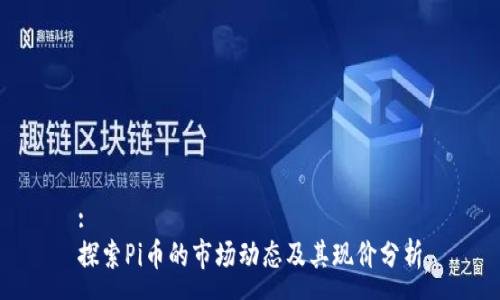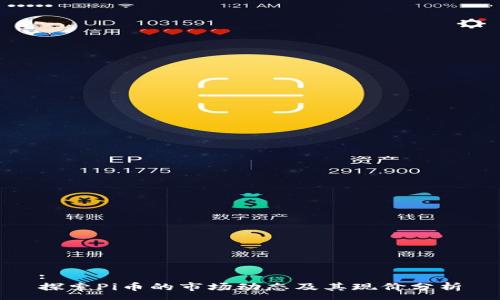Pi Coin, a cryptocurrency introduced in 2019, aims to make cryptocurrency mining accessible to the average person. Unlike Bitcoin, which requires expensive hardware and extensive energy resources for mining, Pi allows users to mine on their mobile phones with minimal effort. This revolutionary approach has attracted millions of users worldwide, hoping to capitalize on the cryptocurrency boom.

As of October 2023, assessing the market dynamics of Pi Coin's value can be quite complex due to its unique position within the cryptocurrency ecosystem. Being in the test phase, Pi itself may not yet have a fully established market price. Early adopters of Pi have been engaged actively, with a substantial community of users advocating for its value against traditional cryptocurrencies. However, since Pi is not listed on mainstream exchanges, determining its real-time market price can be speculative.
Pi Network is primarily driven by its community of users. The application incorporates a social networking aspect, where users can invite friends, engage in discussions, and contribute to the network's growth. This communal approach to building a cryptocurrency is one of the aspects that differentiates it from other cryptocurrencies. The increase in active users often correlates with higher perceptions of value and stability, contributing to discussions surrounding current pricing.

Investors and analysts often look at current pricing trends to predict future developments for cryptocurrencies. While some speculate that Pi Coin could become a valuable asset in the future, others caution against the risks associated with investing in non-listed digital currencies. The perception of Pi Coin's value will significantly depend on its eventual market listing, community engagement, technological developments, and the overall climate of the cryptocurrency market.
The valuation of cryptocurrencies, including Pi Coin, largely depends on several contributing factors, including utility, demand, technological innovation, regulation, and market sentiment. For a cryptocurrency to hold and increase its value, it must provide unique utility, effectively interface with users, and navigate regulatory challenges. While Pi Coin aims to establish these foundations, its current lack of a market price creates uncertainty for potential investors.
Investing in any cryptocurrency, including Pi Coin, comes with inherent risks. The volatility of the crypto markets, regulatory constraints, potential scams, and the lack of established value can be daunting. A user-driven currency like Pi also bears the challenge of maintaining interest and engagement over time. For potential investors, it is essential to conduct thorough research and understand these risks before engaging in any transactions.
Pi Coin was launched by a team of Stanford graduates in 2019 and aimed to allow individuals to mine cryptocurrency from their phones without utilizing their device's processing power. This unique model allows the broader public, who may not have access to high-end computing systems, to explore the world of cryptocurrency. The foundation of Pi Coin emphasizes inclusivity, aiming for widespread adoption beyond tech-savvy users. Since its inception, Pi Network has attracted millions, focusing on building a sustainable ecosystem.
The mining process for Pi Coin is distinctive compared to traditional models. Users download the Pi Network application and can mine from their smartphones. Each user earns Pi points as a reward for their contribution to the network's security by validating transactions. The process requires minimal energy and does not drain device battery life. Users can also contribute by inviting friends, which enhances their earning potential. However, since it operates on a centralized security model, understanding its security protocol is crucial for users contemplating participation.
Comparing Pi Coin with established cryptocurrencies such as Bitcoin reveals stark differences in technology, mining mechanisms, and market reception. Bitcoin relies on proof-of-work consensus, requiring considerable computing power and energy consumption. In contrast, Pi Coin employs a mobile application-based model that allows mining without intensive resource demands. Despite Pi Coin's innovative approach, Bitcoin's established market presence and community trust present challenges for Pi in gaining traction as a competitive digital currency. Furthermore, while Bitcoin has proven its value over years of trading, Pi is still in development, making direct comparisons complex.
Regulatory environments significantly affect cryptocurrencies, including Pi Coin. Governments worldwide are refining their stances on digital currencies, with implications for usage, taxation, and legality. If Pi Coin transitions into a more formalized exchange model, it may face scrutiny from regulatory bodies that seek to prevent fraud and protect investors. Understanding the regulations in different jurisdictions is essential for users exploring investment opportunities and participation in ongoing developments.
The future of Pi Coin may depend on various factors, including technological advancements, user engagement, and overall market conditions. Its unique mining model presents an opportunity for mass adoption, yet its success will ultimately hinge on whether it can provide a real-world utility and maintain a robust community. As the cryptocurrency landscape evolves, Pi Coin's ability to adapt, innovate, and respond to user needs will shape its future trajectory.
In conclusion, the exploration of Pi Coin not only highlights the current price dynamics but also reflects the potential for this innovative cryptocurrency to evolve in the broader landscape of digital currencies. As users navigate this journey, understanding the mechanisms, risks, and opportunities will be essential for maximizing their engagement and investment strategies.
leave a reply